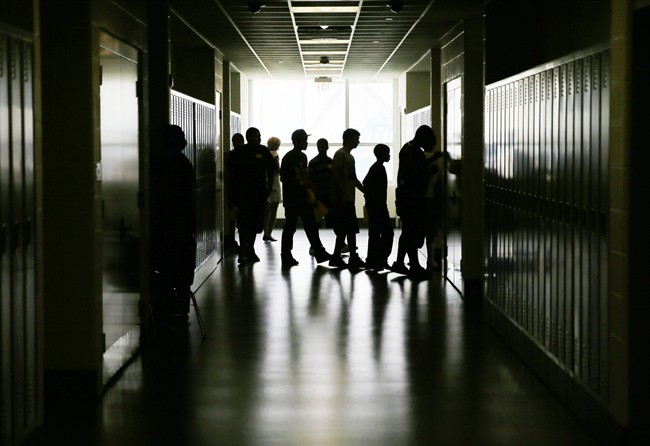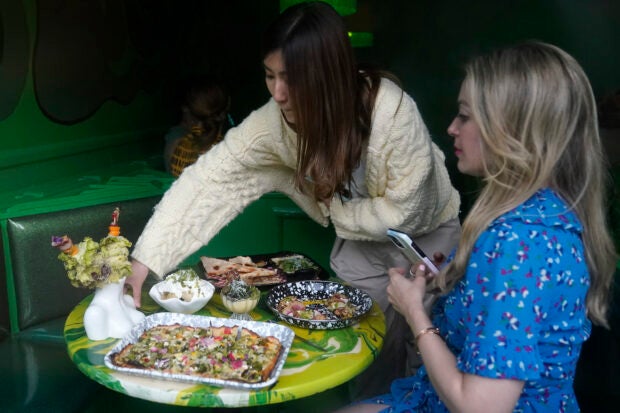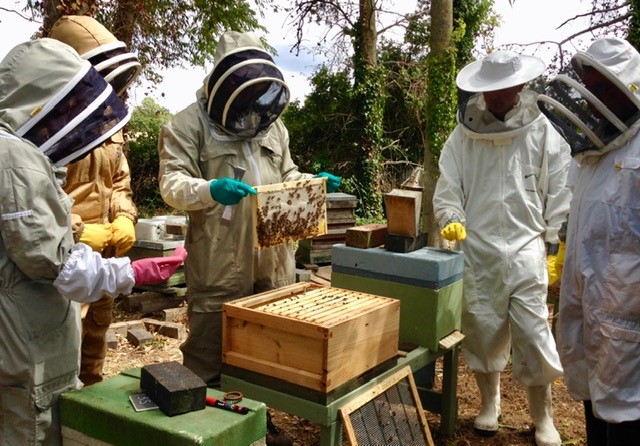뉴스&스피킹(영자신문)
하루 10분이면 영어에 대한 두려움을 극복하고 누구나 유창하게 영어를 구사하실 수 있습니다.
-
 Why Students Are Missing School, How to Fix It In Los Angeles this year, improving attendance was a top issue for the district. The city hired workers to visit homes to find students who had been absent to get them back into school. The district also hired more attendance counselors to assist families in getting housing, food, or even transportation. Los Angeles schools superintendent Carvalho told the Philadelphia Inquirer in May that the district had seen a 32 percent decrease in chronic absenteeism.
Why Students Are Missing School, How to Fix It In Los Angeles this year, improving attendance was a top issue for the district. The city hired workers to visit homes to find students who had been absent to get them back into school. The district also hired more attendance counselors to assist families in getting housing, food, or even transportation. Los Angeles schools superintendent Carvalho told the Philadelphia Inquirer in May that the district had seen a 32 percent decrease in chronic absenteeism.
The Education Trust said chronic absenteeism is a community problem that should be dealt with using community-based methods.
“Unless school leaders draw upon the knowledge of their students and families, they are unlikely to create effective solutions,” the report said.
I’m Dan Novak.View -
 South Koreans Become Younger after Country Changes Counting Method Many South Koreans are now one or two years younger after the nation changed the way it counted ages on Wednesday. A new law will bring South Korea in line with how most countries around the world count a person’s age.
South Koreans Become Younger after Country Changes Counting Method Many South Koreans are now one or two years younger after the nation changed the way it counted ages on Wednesday. A new law will bring South Korea in line with how most countries around the world count a person’s age.
In the past, South Korea used a traditional age-counting method that considered a baby one year of age at birth. People then turned a year older every January 1. That means that a child born in December would turn 2 shortly after birth.
One young girl told a local television station: “I turned 6 and then I became 5 again.”
Some South Koreans became two years younger. Oh Seung-youl went from 63 to 61. “It’s always good to be younger,” he said with a laugh.
One person, however, reminded people that the new age-counting plan does not change a person’s true age.
Choi Eun-young is now 49. She used to be 50.
“The law doesn’t make you biologically younger and there are no real benefits other than feeling good about being called a year younger than before,” she said.
President Yoon Suk Yeol said updating all South Korean’s ages to the international norm was an important goal for his government. He said he wanted to reduce “social and administrative confusion.”
But government officials said the new law does not change how South Koreans receive public services and benefits. They were always based on the international standard. So were rules about when a child starts school, when a young person is permitted to drive a car, and when an adult can get a pension.
Kim Si-eun said she already misses the old method of age-counting. She is 21 years old. She said the old way seemed easier.
“With everybody now going with international age, the changed ages feel awkward,” Kim said.
Some observers say the change will be helpful in situations such as giving medicine to children. Instructions on a box of medicine could say the amount for a 12-year-old is different from an 11-year-old. However, if the package was made outside of South Korea, it could be hard for South Korean parents to know how much medicine to give their child.
One office worker noted that South Koreans respect older people. So if someone is now a bit younger, they may no longer be considered as important in an office or an organization.
“You are losing as much as two years!” said 56-year-old office worker Choi Duck-sang. “Still, I think this is a change that should have been made much earlier. It’s a good thing -– the entire nation got younger together,” he said.
I’m Dan Friedell.View -
 US Restaurants, Companies ‘Upcycle’ Leftover Food Tyler Malek is the head ice cream maker at the Portland, Oregon-based Salt & Straw.
US Restaurants, Companies ‘Upcycle’ Leftover Food Tyler Malek is the head ice cream maker at the Portland, Oregon-based Salt & Straw.
He uses leftover yogurt to make his lemon curd ice cream. For chocolate barley milk, he mixes leftovers of rice and grains used to make beer to give it a creamy taste.
“Instead of calling this food waste, we need to call it wasted food and start decreasing how much wasting we’re doing,” Malek said.
Malek’s ice cream company is among those at the start of a movement called upcycling. It is a process of creating high-quality products from leftover food.
The movement is gaining ground as buyers want to know what is in their food, where their food comes from, and how it affects the environment.
The Upcycled Food Association said more than 31 million metric tons of food are wasted every year in the U.S. The organization estimated that waste makes up about 40 percent of the country’s food production, costing the national economy more than $200 billion.
Upcycled food is becoming increasingly common in food products like cake mixes and veggie chips at natural food stores. Others include fruits and vegetables that are rejected by restaurants and food stores because of their shape or color.
The Upcycled Food Association gives out an official “Upcycling Certified” seal to qualifying products. These seals, found on the new Salt & Straw ice cream, bring attention to buyers that this company is upcycling food.
The organization approved 30 food products in 2021 to carry the seal. But now, 450 different products have received the marker.
Angie Crone is the organization’s chief executive. She said outdated guidelines led to a lot of wasted and uneaten food. Crone added, “So this is a mark that you can see on the products wherever you go shopping, to be able to understand how that company is reducing food waste...”
The organization’s marker is also found on all products made by Renewal Mill. The Oakland, California-based company is turning leftover food products from plant-based milk into food products like flour to reduce waste at the manufacturing level.
Caroline Cotto, the company’s founder said, “And then we use that flour to make things like baking mixes and ready-to-eat cookies.” Its flour is also used in Salt & Straw’s new “Salted Caramel & Okara Cupcakes” ice cream.
The movement is not limited to recycled products found in ice cream stores, farmers' markets, or natural food stores. In San Francisco, a restaurant is now serving pizza and wine with upcycled food such as ugly mushrooms and discolored tomatoes.
I’m Gregory Stachel.View -
 Europe Prepares to Launch Spacecraft to Observe 'Dark Side’ of Universe The European Space Agency (ESA) is preparing to launch a spacecraft designed to study the mysteries of dark matter and dark energy across far reaches of the universe.
Europe Prepares to Launch Spacecraft to Observe 'Dark Side’ of Universe The European Space Agency (ESA) is preparing to launch a spacecraft designed to study the mysteries of dark matter and dark energy across far reaches of the universe.
The launch of ESA’s Euclid spacecraft is set for July 1. It will lift off from Florida’s Cape Canaveral launch center aboard a SpaceX Falcon 9 rocket.
Euclid is a space telescope built to act as an orbiting observatory. It will gather data scientists hope to use to create a 3D map of the universe. The spacecraft is expected to observe activities in billions of galaxies and help researchers learn more about how the universe developed over the past 10 billion years.
The main goal of the Euclid mission is to study the effects and activities of dark energy and dark matter – both of which are considered mysterious forces in the universe. This is because neither of these two materials can be directly seen or felt.
Astronomers believe dark energy makes up about 68 percent of the universe, while dark matter makes up around 27 percent, the American space agency NASA reports. But beyond that, very little is known about the two “dark” elements.
Dark energy is an unidentifiable form of energy that scientists believe is responsible for helping the universe expand. Dark matter is a material that also affects the expansion of the universe. Astronomers have theorized that dark matter exists because of gravity’s observed effects on galaxies and groups of galaxies.
Leaders of the mission say Euclid was built to collect data on how the universe “has expanded and how structure has formed over cosmic history,” an ESA statement says. With this information, scientists will attempt to explain some of the properties of dark energy, dark matter and gravity, the statement added.
The Euclid spacecraft is 4.7 meters tall and 3.7 meters around. It contains two main parts, called modules. One module is made up of a telescope and two scientific instruments. The other contains satellite systems, power controllers, data processors and other equipment.
Euclid will travel to an orbiting spot about 1.5 million kilometers from Earth. The area is called the second Lagrangian Point. This is where NASA’s James Webb Space Telescope operates from, as well as ESA’s orbiting observatory Gaia.
Mission leaders say Euclid will capture images in optical and near-infrared light. The images will cover about one-third of the universe beyond our Milky Way galaxy.
The quality of the images is expected to be “at least four times sharper” than others captured by ground-based telescopes, the team said. These images will be used to create a new, detailed 3D map of the universe. The first images are expected to be sent back quickly once the spacecraft’s operations begin in October.
In addition to studying dark matter and dark energy, Euclid will use its infrared instruments to collect data on hundreds of millions of galaxies and stars. Astronomers say this will permit them to investigate the chemical makeup and motion behaviors of many different space objects and environments in greater detail.
NASA’s James Webb Space Telescope is also based on powerful, but sensitive, infrared technology. This has permitted the telescope to collect data and produce images from parts of the universe that were never observable before.
I’m Bryan Lynn.View -
 Company Works to Save Mexico City’s Bees A company in Mexico City is working to save some small, but important members, of the Mexican capital’s community --- bees. The flying insects play a big part in a healthy ecosystem as pollinators.
Company Works to Save Mexico City’s Bees A company in Mexico City is working to save some small, but important members, of the Mexican capital’s community --- bees. The flying insects play a big part in a healthy ecosystem as pollinators.
The company is called Abeja Negra SOS. Abeja means bee in Spanish and negra means black. SOS is a code used to communicate an urgent need for help.
The company’s main effort is to find new homes for bees threatened with destruction by bee removal services. They usually destroy the bee homes, called beehives, in their work.
Abeja Negra SOS was created in 2018. Its leader, Adriana Velíz, is an animal doctor. She was working for the government, she said, when she started noticing calls about beehive removal needs. She said the government’s first answer was to kill the bees.
So, she and other coworkers began looking for a way to remove the bees and their homes without such destruction. They decided on re-homing the insects.
“We do these rescues because it’s a species that’s in danger of extinction,” said Velíz, adding, “We give them a second chance.”
Around the world, bee numbers have decreased sharply in recent history. The United States alone is estimated to have lost around 25 percent of its bees in the past 40 years. Earlier this year, beekeepers in southern Mexico mourned the “mass killing” of millions of bees by farming chemicals.
The decrease in bee populations is often blamed on human causes. Reasons include the use of damaging chemicals, the destruction of natural environments, and climate change. Scientists and world leaders warn that decreasing bee numbers could have many different effects.
In 2019, the United Nations declared that bee loss is a serious threat to worldwide food security.
Adriana Correa Benítez is a professor researching bees at National Autonomous University of Mexico. She said loss of bees could make it more difficult for Mexico to deal with climate change.
Because many of the bees in Mexico come from African roots, they can be more aggressive than the average honeybee. Some people living in the city fear bee attacks and bee stings. And some also may not understand the importance of bees.
During the last five years, Abeja Negra SOS says it has saved bees in hives all around the capital city, which is home to nine million people. The group says it has re-homed about 510 hives. The average population of such a hive is 80,000 bees.
Once a removed hive is safely stored inside of a box, the group takes the bees to the rural edges of the city. The bees can recover there and grow stronger. They later give the bees to local bee farmers or release them into the wild.
The team has faced some difficulties because their hive re-homing service costs a bit more than $300. For many in the city, it is still easier to call firefighters to exterminate bees for free.
Yet, the project has grown. And talk of Abeja Negra SOS has also led to the creation of other groups who are doing the same work.
“With what we do, we may not be changing the world, but we’re at least changing the situation in our city,” Velíz said.
I’m Gregory Stachel.View

